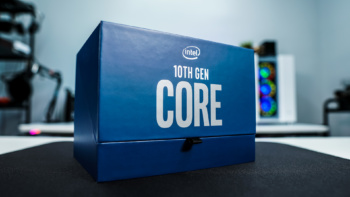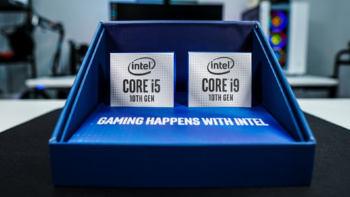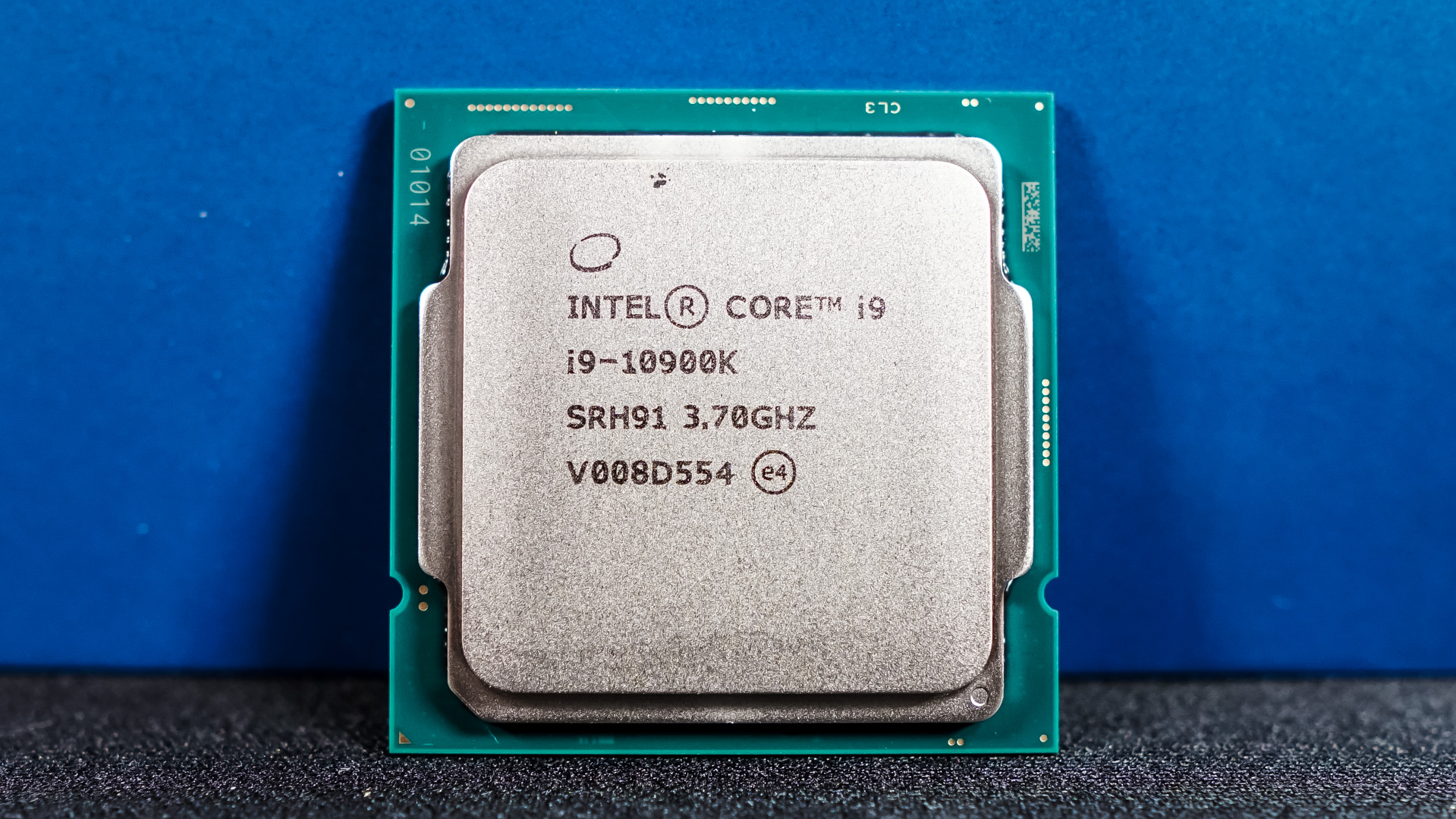We’ve been talking about them for a while and they are finally here, Intel’s 10th generation Core “Comet Lake-S” desktop processors. With these new series of processors Intel has has brought improvements to the clock-speed boosting algorithm, increased core/thread counts across the board, and added new features for enthusiasts and overclockers. At the top of the pack we have the Core i9-10900K. This is a 10-core, 20-thread part which has a base clock of 3.7 GHz and has the ability to boost all the way up to 5.3 GHz. Intel is calling the i9-10900K the “World’s Fastest Gaming Processor” and we are going to put it to the test and see if that is true!
Special thanks to Intel for providing us with the Core i9-10900K Processor to review.
The Core i9 10th generation processor series is made up of four chips, all of which are the i9-10900K, i9-10900KF, i9-10900, and i9-10900. The Core i9-10900K is unlocked and features an iGPU. The Core i9-10900KF is unlocked, but lacks integrated graphics. The Core i9-10900 has an iGPU but isn’t unlocked and finally the Core i9-10900F is multiplier-locked and lacks the iGPU. These chips are priced between $488 and $422 (1000 unit tray quantities).
Getting into details for the Core i9-10900K here is what we have…
Cores: 10
Threads: 20
TDP: 125W
Base Clock: Up to 3.7 GHz
All Core Turbo Frequency: Up to 4.8 GHz
Turbo Boost Max 3.0: Up to 5.2 GHz
Thermal Velocity Boost – Single / All Core: Up to 4.9 GHz / 5.3 GHz
Platform PCIe Lanes: Up to 40
Memory Support: Two Channels DDR4-2933
Graphics: Intel UHD Graphics 630
What is new?
Up to Three Different Boosting Algorithms: Intel has up to three different clock speed boosting algorithms deployed on various SKUs in the series:
– Turbo Boost 2.0: This is the most basic boosting technology, available across all 10th gen Core i9, Core i7, Core i5, and Core i3 SKUs
– Turbo Boost MAX 3.0: Carried over from the Core X HEDT processor family, Turbo Boost Max 3.0 is now available on 10th Gen Core i9 and Core i7 SKUs, enabling higher notches of clock speed than Turbo Boost 2.0, and it also adds “Favored Cores”. This makes the operating system aware the two physically-best cores, which can sustain higher boost frequencies better than the rest of the CPU. The goal is to have the OS scheduler prioritize running workloads on these cores, so they can run faster. Windows 10 has had Favored Core awareness since 1609, and Linux x64 kernels since January 2018 have supported it.
– Thermal Velocity Boost: Carried over from its 9th and 10th generation Core mobile processors, Thermal Velocity Boost is available to 10th generation Core i9 SKUs. The feature enables clock boost speeds even higher than Turbo Boost MAX 3.0, in short bursts, provided your processor’s cooling solution is able to consistently keep temperatures below a threshold, and provided a few power targets are met. We confirmed with Intel that for the 10th gen desktop chips, this threshold is set at 70 °C (for the mobile parts it is 65 °C).
New Core and Memory overclocking features, including:
– The ability to enable or disable HyperThreading for individual cores. Until now, you could disable or enable HTT only globally. This comes as a boon for gamers who want to set a few of their cores without HTT, and a few with HTT for streaming applications
– Enhanced, finer grained voltage/frequency curve controls. Intel is launching a major update to XTU alongside these processors, which lets you set the voltage at individual frequencies, for much finer control of overclocking parameters. This technique was pioneered by GPU vendors and helps reduce power in situations when the CPU is not running at highest frequency. Traditionally you could either program a voltage offset that shifts the whole V-F curve in one direction, or program an override voltage that runs the CPU at the same voltage all the time, wasting tons of energy in the process. Now you may change the shape of the curve, too: undervolt when idle or lightly loaded, but higher voltage when loaded, to reach higher overclocking? It’s possible now.
– The ability to overclock the PCI-Express 3.0 x16 graphics bus (PEG), and DMI chipset-bus. We’re not entirely sure how this is accomplished. Both are PCIe-based interfaces, which can only tolerate a few MHz clock variance for high-bandwidth devices such as GPUs. We asked Intel how this works, and they confirmed that “DMI and PCIe are linked. By overclocking one, you are overclocking the other”.
Physical, packaging improvements: Intel made some improvements to the processor package with an aim of improving heat transfer between the die and the cooling solution. Without changing the Z-height of the package, Intel found a way to thicken the copper IHS, by thinning the silicon die (from 800 µm down to 500 µm; and the fiberglass substrate. Soldered TIM (STIM) sits between the die and the IHS. This should improve heat transfer significantly, as silicon is a thermal insulator, whereas the copper IHS is highly conductive.
Native support for DDR4-2933 and higher memory clocks across the board: up to DDR4-4000 for two dual-rank modules, over DDR4-4800 for two single-rank modules, and beyond DDR4-5000 for one single-rank module.
Packaging
We did not receive the retail packaging for these new processors, instead Intel sent us a “reviewer kit” which came with two processors.




Getting the Core i9-10900K out of the box we have a retail chip. The chip looks much like other Intel processors, here are a few shots of the front and back.









